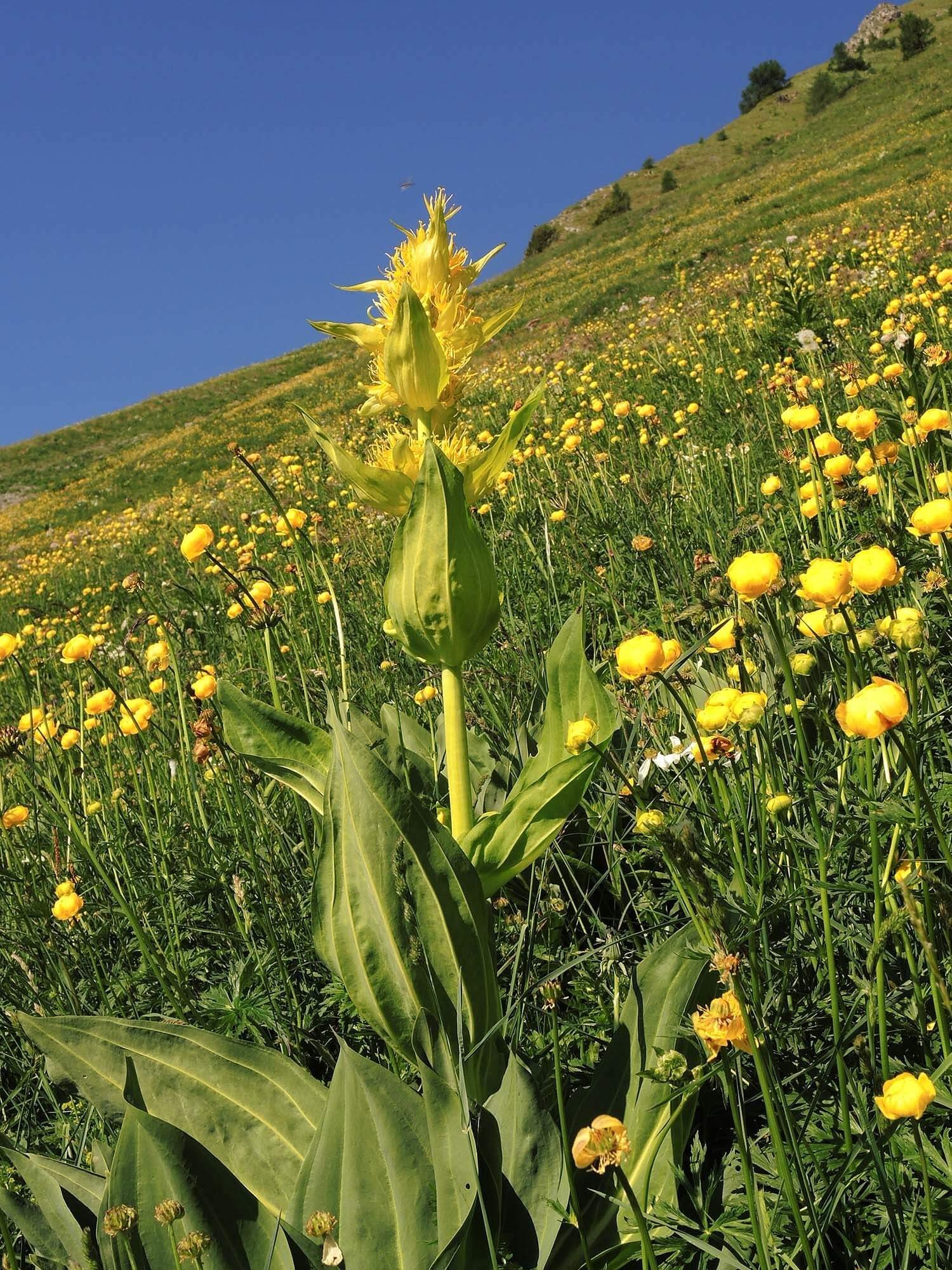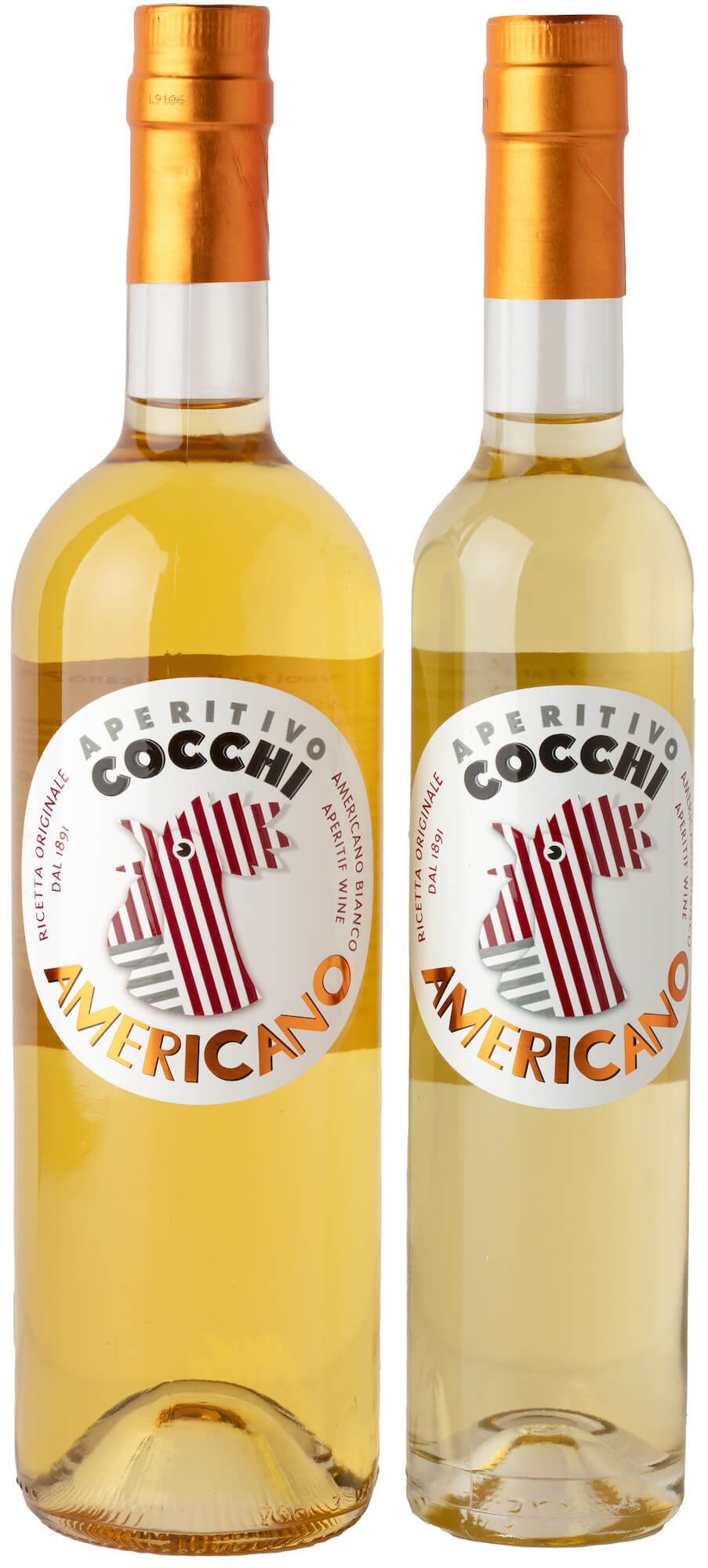Bitter Botanicals: What is Gentian and Where Do We Find It?
This article is part of a series on some of the bitter botanicals most frequently used in cocktails and spirits and is in anticipation of Camper English’s upcoming book, Doctors and Distillers.
"Gentiana acaulis-2960" by Ragnhild & Neil Crawford is licensed under CC BY-NC-ND 2.0
While wormwood has the reputation as the bad boy of the bitter botanical world, found in absinthe, vermouth, and amaro, probably the most popular bitter botanical used in alcoholic beverages is gentian. It’s found in nearly all bitters, many vermouths, and most Amari. Like the other bitter herbs and roots in this series, gentian has its roots in medicine. It was used by the Greeks and later civilizations, most often for digestive tract issues such as stimulating the appetite, curing indigestion, and easing constipation.
There are over 400 species in the gentian genus. Most gentian used in beverages is the root of the great yellow gentian (Gentiana lutea), but some manufacturers of vermouth and amari use blue-flowered stemless gentian (Gentiana acaulis). Jägermeister is said to contain 56 secret botanicals, and one of them is a member of the gentian family called Swertia chirayita (often spelled chiretta) that contains the same bitter compound as other gentians. It is sometimes known as Indian gentian as it was used in Ayurvedic medicine.
Americanos
In EU regulations, there is a category of fortified wines called americanos. These wines contain both gentian and wormwood. They include Cappelletti Aperitivo Americano and Cocchi Americano, and they are typically consumed with soda water. There is also a cocktail called the Americano, of course, made with Campari, sweet vermouth, and soda water. The drink’s origins are in mixing a bitter liqueur, not necessarily Campari, with vermouth (in the format of an American-style cocktail), so americano the category and Americano the cocktail seem likely to be related.
Amari
Beyond its presence in the wine-based aperitifs mentioned above, gentian is also found in spirit-based amari including Amaro Lucano, Fernet-Branca, Nardini Amaro, Ramazzotti, and Unicum/Zwack. Plus it is almost certainly an ingredient in the secret recipes for Aperol and Campari. When in doubt, the bitterness in your bitter liqueur probably comes from gentian.
Liqueurs
To taste liqueurs centered around gentian, seek out Avèze, Suze, and Salers. They tend to taste grassy and vegetal; not horribly bitter, but with that signature tangy aspect. These gentian-forward brands all have a low ABV of around 20 percent. Many people consume them with soda water as an aperitif or attempt a White Negroni, replacing Campari with one of these liqueurs, and using dry vermouth (or even Lillet instead of sweet).
Bitters
Nearly all cocktail bitters contain gentian as well, including Angostura, Regans’, and Fee Brothers. These bitters may or may not also include cinchona or another barky dry backing flavor, but gentian tends to dominate the bitter part of their flavor profiles. Everything else is just spices.
Gentian has even flavored non-alcoholic sodas. The most famous of which is Moxie, a soda created in Maine in the late 1800s and still produced and consumed in New England. It is now owned by Coca-Cola. Like bitters, Moxie was originally a patent medicine and first called “Moxie Nerve Food” supposedly containing a secret South American plant that could heal all sorts of conditions. After American food and drug regulations forbid false advertising in the early 1900s, Moxie along with other patent medicines had to start telling the truth or be put out of business.
Some tonic water makers are substituting gentian for cinchona in their products. In the US, the brand Top Note released a limited-edition Gentiana Tonic in 2021, but a few more brands are available overseas. Tonic waters are typically sweetened to counteract the bitterness of cinchona, and they are with gentian as well.
It’s worth taking the time to get to know the flavor of gentian, because you’ll be able to identify it in so many of the popular cocktail ingredients we use every day.





